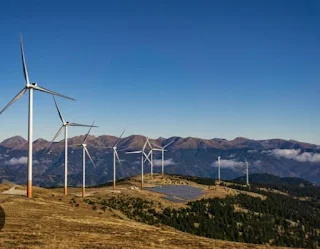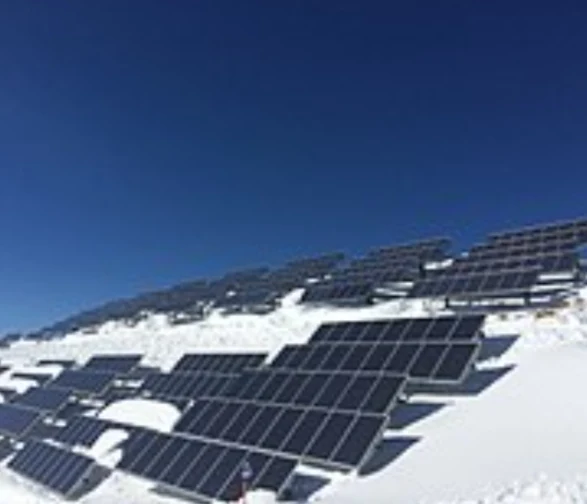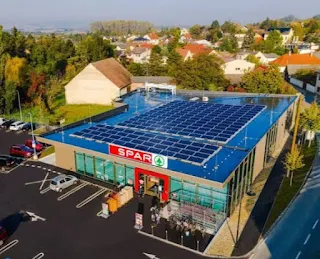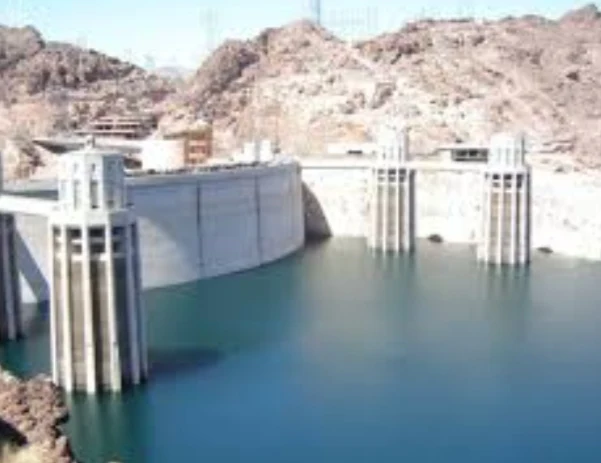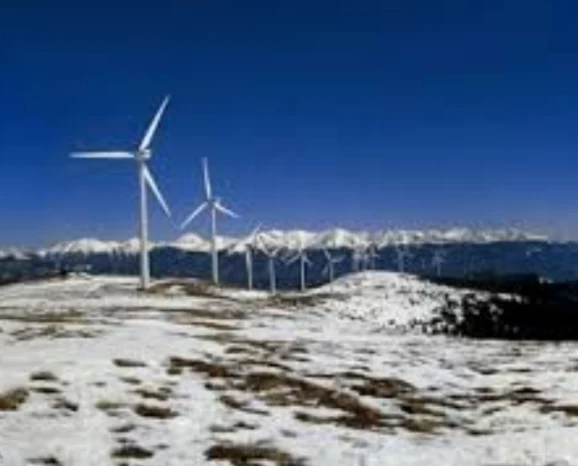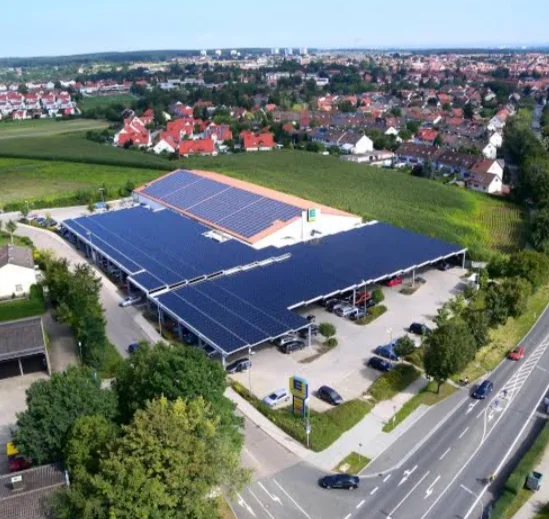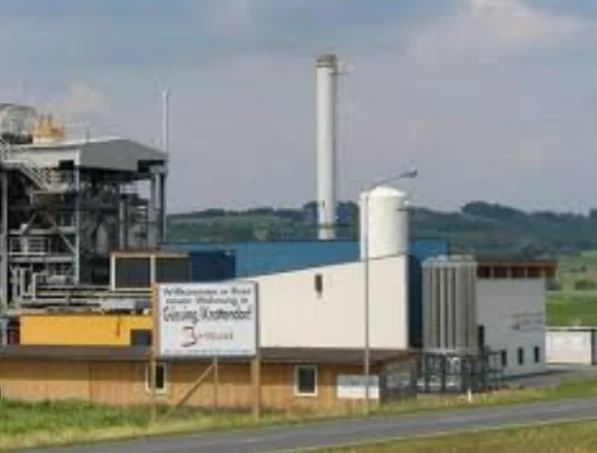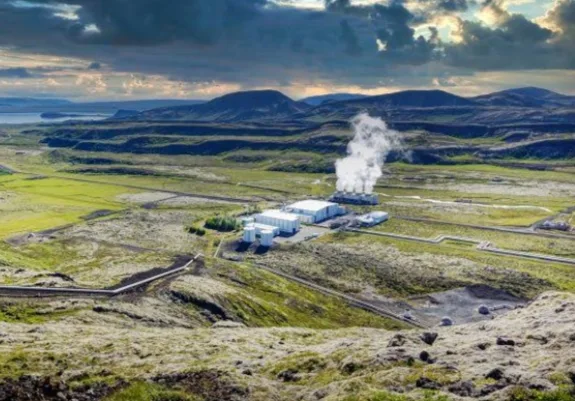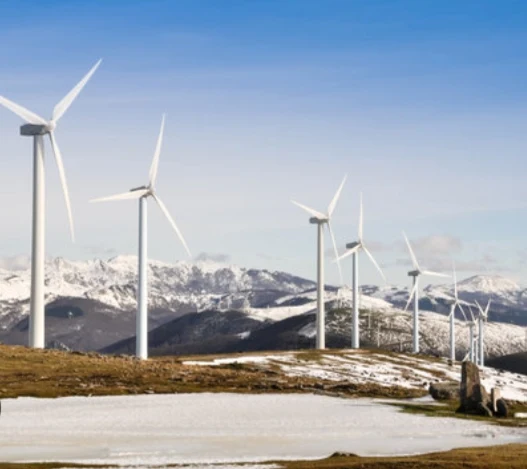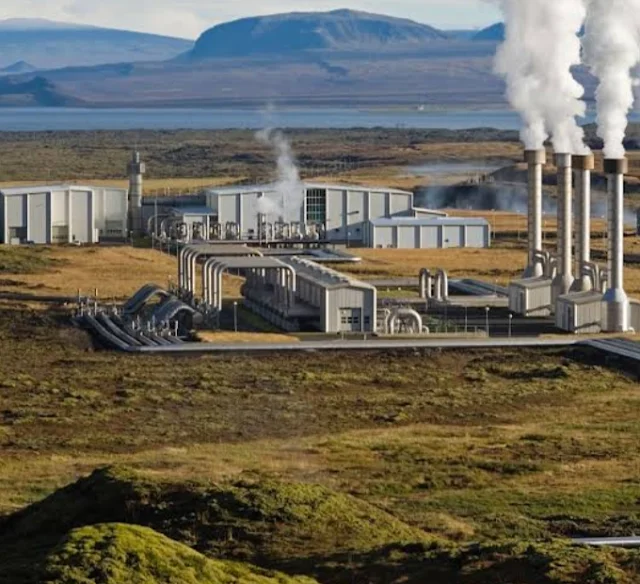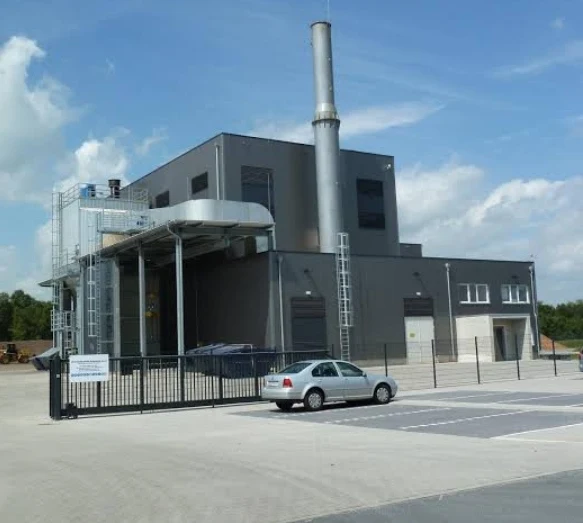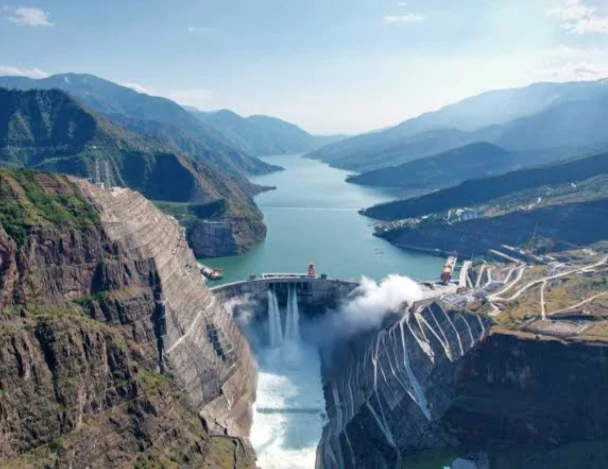History of Renewable Energy Development in Austria: A Journey of Commitment and Innovation
Austria boasts a remarkable journey in developing its renewable energy sector, transforming itself into a global leader. Let's explore the key milestones and factors contributing to this success:
Early Beginnings (Pre-1970s):
- Hydropower Pioneer: Blessed with abundant rivers and mountainous terrain, Austria embraced hydropower from the late 19th century. By the 1950s, it dominated the country's electricity generation.
Anti-Nuclear Stance and Renewables Rise (1970s-1990s):
- Public Rejects Nuclear: In 1978, a historic public vote overwhelmingly denied the construction of Austria's sole nuclear plant, solidifying its commitment to renewables.
- Diversification with Wind and Biomass: Subsequent decades saw investments in wind and biomass, with government support through feed-in tariffs and incentives.
Rapid Expansion and EU Leadership (2000s-Present):
- Soaring Renewable Share: By 2010, Austria's renewable share in electricity generation skyrocketed to 68%, placing it among the EU's frontrunners.
- Ambitious Goals and Continued Progress: With ambitious targets of 100% renewable electricity by 2030 and carbon neutrality by 2040, Austria continues to invest in solar, geothermal, and other technologies.
Key Factors for Success:
- Strong Policy Support: Long-term policies, financial incentives, and research funding from the government played a pivotal role.
- Public Acceptance: Widespread public support for renewables fostered a conducive environment for development.
- Favorable Geography: Natural resources like hydropower potential and wind energy corridors proved advantageous.
Challenges and Future Prospects:
- Grid Integration: Integrating variable renewable sources like wind and solar into the grid presents a significant challenge.
- Social Acceptance: While general support exists, specific projects might face local opposition.
- Cost-Effectiveness: Ensuring the cost-effectiveness of renewable deployment remains crucial for continued expansion.
Despite these challenges, Austria's commitment to innovation and public support set a strong foundation for its future. It serves as a model for other countries aiming to transition to a sustainable energy future.
Renewable Energy Consumption in Austria
Austria is a global leader in renewable energy consumption, boasting impressive statistics and ambitious goals. Here's a breakdown:
Current Status:
- Share of Renewables: As of 2022, 79% of Austria's electricity comes from renewable sources, placing it among the top in the world.
- Breakdown by Source:
- Hydropower: 67% (dominant source, leveraging abundant rivers and mountainous terrain)
- Wind Power: 19%
- Solar Power: 14%
- Bioenergy: 3%
- Geothermal Energy: 1%
- Total Renewable Energy Consumption: Over 82 Terajoules (TJ) in 2020, distributed across electricity, heating, and cooling sectors.
Goals and Targets:
- 100% Renewable Electricity: Austria aims to achieve 100% renewable electricity by 2030, implying an additional 22-27 Terawatt hours (TWh) of renewable electricity generation.
- Carbon Neutrality: The country has set an ambitious target of achieving carbon neutrality by 2040, further solidifying its commitment to sustainability.
Challenges and Opportunities:
- Grid Integration: Integrating increasing amounts of variable renewable sources like wind and solar into the grid poses a challenge.
- Social Acceptance: While there is general support for renewables, some specific projects may face local opposition.
- Cost-Effectiveness: Ensuring the cost-effectiveness of renewable energy deployment will be crucial for its continued expansion.
Austria's impressive renewable energy consumption, ambitious goals, and ongoing efforts to address challenges position it as a global leader and an inspiration for other countries seeking a sustainable energy future.
Renewable Energy Growth in Austria: A Story of Steady Progress and Ambitious Goals
Austria is a world leader in renewable energy growth, experiencing consistent expansion and setting ambitious targets for the future. Let's delve into the specifics:
Recent Growth:
- Electricity Generation: Between 2010 and 2022, the share of renewables in Austria's electricity generation rose from 68% to 79%, representing a significant increase.
- Installed Capacity: Wind power capacity tripled from 2014 to 2022, reaching over 3.2 GW, while solar photovoltaic capacity grew tenfold to over 3.4 GW in the same period.
- Investment: Austria invested €4.8 billion in renewable energy in 2022, highlighting its dedication to continued growth.
Factors Driving Growth:
- Favorable Policy Environment: Austria's "Renewables Expansion Law" (EAG) of 2021 supports investments in solar, wind, and biomass through grants and subsidies.
- Public Support: Public opinion in Austria strongly favors renewable energy, creating a positive environment for development.
- Technological Advancements: Cost reductions in wind and solar power technologies have made them more competitive with fossil fuels.
Future Growth Projections:
- Target: Austria aims to achieve 100% renewable electricity by 2030, requiring an additional 27 TWh of generation capacity.
- Focus Areas: Expansion in wind and solar power is expected to play a dominant role, supplemented by growth in geothermal and biomass.
- Challenges: Grid integration of variable renewable sources, social acceptance of specific projects, and cost-effectiveness remain key challenges to overcome.
International Recognition:
- Austria consistently ranks among the top countries in global renewable energy rankings, including those by IRENA and the World Bank.
- The country serves as a model for other nations aiming to transition towards a sustainable energy future.
Beyond Electricity:
While the focus is often on electricity, Austria is also expanding renewable energy use in the heating and cooling sectors, aiming for increased integration and overall decarbonization.
Austria's remarkable renewable energy growth is a testament to its policy framework, public support, and commitment to innovation. Looking ahead, the country's ambitious goals and ongoing efforts position it as a leader in shaping a more sustainable future.
.
Statistic Data of Renewable Energy Patterns in Austria
Here's a breakdown of key renewable energy statistics in Austria:
Electricity Generation:
- Share of Renewables:
- 2022: 79%
- 2010: 68%
- Breakdown by source:
- Hydropower: 67% (dominant)
- Wind Power: 19%
- Solar Power: 14%
- Bioenergy: 3%
- Geothermal: 1%
- Total Renewable Consumption:
- 2020: 82 Terajoules (TJ)
- Distributed across electricity, heating, and cooling sectors.
Growth:
- Electricity Generation: Increase from 68% to 79% in renewable share between 2010 and 2022.
- Installed Capacity:
- Wind: Triplication from 2014 to 2022 (over 3.2 GW).
- Solar PV: Tenfold growth from 2014 to 2022 (over 3.4 GW).
- Investment: €4.8 billion in renewable energy in 2022.
Hydropower in Austria: A Leading Light in Renewable Energy
Hydropower dominates the renewable energy landscape in Austria, playing a crucial role in the country's energy independence and sustainability efforts. Let's delve into its significance:
Current Status:
- Dominant Contributor: As of 2022, hydropower accounts for an impressive 67% of Austria's electricity generation, making it the leading source of renewable energy.
- Installed Capacity: Over 12 GW of installed hydropower capacity, spread across roughly 1,300 hydropower plants.
- Type Breakdown:
- Run-of-river: Majority type, utilizing flowing water without needing large dams.
- Pumped storage: Provides flexibility and grid balancing capabilities.
Significance and Benefits:
- Reliable and Baseload Power: Hydropower offers reliable and continuous electricity generation, serving as a stable baseload for the grid.
- High Efficiency: Conversion of water potential energy into electricity boasts high efficiency, minimizing energy losses.
- Clean and Sustainable: Generates electricity without greenhouse gas emissions or air pollution, contributing to climate change mitigation.
- Flexibility: Pumped storage plants offer flexibility, storing excess energy during low demand periods and releasing it during high demand.
Future Outlook:
- Continued Role: While growth might not be significant due to limited untapped potential, hydropower will likely remain the cornerstone of Austria's renewable energy mix.
- Modernization and Efficiency: Focus on modernization and efficiency improvements of existing plants to maximize output and sustainability.
- Integration with Other Renewables: Integrating hydropower with other renewable sources like wind and solar for a more resilient and flexible energy system.
Challenges and Considerations:
- Environmental Impact: Hydropower development can impact river ecosystems and biodiversity, requiring careful planning and mitigation measures.
- Public Acceptance: New projects might face local opposition due to potential environmental and social impacts.
- Sedimentation: Managing sedimentation buildup in reservoirs is crucial for long-term sustainability.
Hydropower is a cornerstone of Austria's renewable energy success story. While there are challenges to address, its continued responsible development and integration with other renewables will be vital for securing a sustainable energy future.
Wind Energy in Austria: A Story of Steady Growth and Future Potential
While not currently as dominant as hydropower, wind energy plays a significant role in Austria's renewable energy mix and has experienced substantial growth in recent years. Here's a closer look:
Current Status:
- Contribution: As of 2022, wind power accounts for 19% of Austria's electricity generation, ranking second behind hydropower.
- Installed Capacity: Over 3.2 GW of installed wind power capacity across approximately 800 wind turbines.
- Growth: Triplication of installed capacity from 2014 to 2022, showcasing significant expansion.
- Location: Wind farms primarily concentrated in eastern and northeastern regions with favorable wind conditions.
Significance and Benefits:
- Renewable and Clean: Generates electricity without harmful emissions, contributing to climate change mitigation efforts.
- Cost-Effective: Technology advancements have made wind power increasingly cost-competitive with fossil fuels.
- Job Creation: Development and maintenance of wind farms create employment opportunities in rural areas.
- Land Use: Requires less land compared to some other renewable sources like solar.
Future Outlook:
- Ambitious Targets: Austria aims to significantly increase wind power capacity by 2030, playing a crucial role in achieving 100% renewable electricity.
- Technological Advancements: Continued advancements in turbine technology are expected to further increase efficiency and reduce costs.
- Offshore Potential: Exploring the potential of offshore wind farms in the Baltic Sea for additional capacity.
Challenges and Considerations:
- Grid Integration: Integrating variable wind energy into the grid requires smart grid technologies and storage solutions.
- Social Acceptance: Public concerns about visual impact and noise pollution from wind farms can be challenges.
- Environmental Impact: Careful planning and mitigation measures are needed to minimize impact on wildlife and habitats.
Wind energy is a key player in Austria's renewable energy transition. Overcoming challenges and harnessing future potential will be crucial for achieving ambitious renewable energy goals and a sustainable future.
Solar Energy in Austria: Key Data Points
Current Status:
- Electricity from Renewables in 2021: 71% (leader in Europe)
- Solar Power Capacity (end of 2022): 3.8 GW
- Electricity from Solar Power in 2022: 4.2%
- Market Growth CAGR (2024-2029): 17.47%
Ambitious Goals:
- 100% Renewable Electricity by 2030: Aiming for complete transition
- 1 Million Homes with Solar Panels by 2030: Significant expansion planned
- Additional 11 TWh Photovoltaics Needed by 2030: Substantial increase required
Driving Forces:
- Government Support: Feed-in tariffs, grants, tax breaks
- Public Support: Strong preference for clean and reliable energy
- Falling Costs: Solar panels becoming more affordable
- Favorable Climate: Austria has ample sunshine for generation
The future of solar energy in Austria appears promising. With strong government and public support, falling costs, and a suitable climate, the country is well-positioned to achieve its ambitious goals and become a leader in solar power generation.
Biomass Energy in Austria: A Leading Renewable Contributor
Biomass occupies a prominent position in Austria's renewable energy landscape, holding the title of most relevant renewable source:
- Overall Share: 57% of total renewable energy (as of 2022)
- Electricity Production: 6.5% (mostly through combined heat and power plants)
- Heat Production: 30% of total heat energy mix
- Most Popular Source for Residential Heating: 40% share in dwellings
Key Features:
- Dominant Heat Market: Biomass primarily contributes to heat generation, accounting for 81% of its production in 2016.
- District Heating Leader: 50% of district heating relies on biomass, with significant expansion through biomass-based plants in the past decade.
- Growth Potential: The Austrian Biomass Association estimates the potential to nearly double biomass energy use.
Drivers of Success:
- Established Infrastructure: Austria has a well-developed infrastructure for utilizing biomass, including numerous wood pellet boilers and biogas plants.
- Sustainable Forestry Practices: Emphasis on responsible forest management ensures a reliable supply of wood-based biomass.
- Supportive Policies: Government incentives like feed-in tariffs and tax breaks encourage investment in biomass technologies.
Challenges:
- Emission Concerns: While considered renewable, biomass combustion can still generate emissions, requiring careful management to minimize environmental impact.
- Competition with Food Production: Balancing land use between energy production and food security remains a critical consideration.
- Cost Fluctuations: Biomass prices can be volatile, impacting project economics.
Future Outlook:
With its established infrastructure, sustainable practices, and supportive policies, biomass is expected to continue playing a vital role in Austria's energy mix. However, addressing emission concerns, competition with food production, and cost fluctuations will be crucial for sustained and responsible growth.
Geothermal Energy in Austria: Tapping into Earth's Heat
While not yet a major player in Austria's energy landscape, geothermal energy holds potential for future growth, thanks to its:
Renewable and Sustainable Nature: Like other renewables, geothermal heat utilizes Earth's internal heat, minimizing resource depletion and emissions.
Reliable Baseload Supply: Geothermal energy delivers continuous, dependable power, balancing intermittent sources like solar and wind.
Diverse Applications: Suitable for heating buildings, producing electricity, and supporting industrial processes.
Current Status:
- Installed Capacity: Around 111 MW (as of 2022), primarily serving district heating networks.
- Electricity Production: Negligible contribution to national electricity generation.
- Heat Production: Provides heating for approximately 40,000 households and various public buildings.
Challenges:
- Limited Geothermal Resource Potential: Geothermal potential varies across Austria, with most promising areas concentrated in Vienna Basin and Pannonian Basin.
- High Exploration and Drilling Costs: Initial investment for accessing geothermal resources can be substantial.
- Regulatory Uncertainty: Lack of a dedicated regulatory framework for deep geothermal projects can hinder development.
Recent Developments:
- Vienna Geothermal Project: A joint venture formed by Wien Energie and OMV aims to develop the first deep geothermal plant in Vienna by 2026.
- Upper Austria's First Geothermal Greenhouse: Utilizing geothermal heat for sustainable vegetable production.
- Growing Public and Institutional Interest: Increased awareness and support for exploring geothermal potential.
Future Outlook:
While challenges exist, growing interest and recent developments suggest potential for geothermal energy to expand in Austria. Government support, technological advancements, and successful pilot projects could unlock its potential as a valuable contributor to the country's clean energy future.
Additional Data:
- Geothermal Heat Pump Installations: Over 90,000 operating in Austria, contributing significantly to space heating.
- Market Growth Potential: Experts estimate geothermal could provide up to 10% of Austria's heat demand by 2050.
Geothermal energy in Austria is at an early stage but holds promise for future growth, contributing to a diverse and sustainable energy mix.
Austria: Renewable Energy Technology by Category (as of 2023)
Hydropower:
- Type: Primarily large-scale run-of-river and pumped storage hydropower plants.
- Installed capacity: 16.7 GW
- Electricity generation: 60% of total, 40 TWh annually
- Strengths: Mature technology, reliable baseload power, efficient energy storage through pumped storage.
- Weaknesses: Limited potential for expansion, environmental concerns regarding river ecosystems.
Wind Power:
- Type: Primarily onshore wind farms, with growing offshore potential.
- Installed capacity: 3.7 GW
- Electricity generation: 15% of total, 10 TWh annually
- Strengths: Rapidly growing technology, cost-effective, good wind resource potential.
- Weaknesses: Intermittency requires grid balancing solutions, visual impact concerns.
Solar Power:
- Type: Mixture of rooftop photovoltaic (PV) systems and ground-mounted solar farms.
- Installed capacity: 2.6 GW
- Electricity generation: 10% of total, 7 TWh annually
- Strengths: Decentralized generation, versatile applications, falling costs.
- Weaknesses: Intermittency, limited land availability for large-scale farms.
Biomass Power:
- Type: Primarily wood pellet combustion plants with some biogas facilities.
- Installed capacity: 0.7 GW
- Electricity generation: 3% of total, 2 TWh annually
- Strengths: Domestic fuel source, dispatchable power, carbon neutrality potential.
- Weaknesses: Emissions concerns, competition for land and forest resources.
Emerging Technologies:
- Geothermal energy: Limited potential in Austria, but several small-scale projects exist.
- Heat pumps: Growing popularity for residential and commercial heating.
- District heating: Well-developed infrastructure, utilizing various renewable sources like biomass and waste heat.
Policy and incentives:
- Strong government support through feed-in tariffs, investment grants, and tax breaks.
- Focus on innovation and research for further development of renewable technologies.
Key Takeaways:
- Austria is a global leader in renewable energy, with hydropower forming the backbone and wind, solar, and biomass playing increasingly important roles.
- Diversification of technology portfolio is crucial for achieving 100% renewable electricity by 2030.
- Balancing environmental concerns, social acceptance, and cost-effectiveness remains a challenge.
Please note: This information is a general overview. Specific details and data may vary depending on the source.
Largest Renewable Energy Power Plant in Austria
Unfortunately, defining "largest" in the context of renewable energy power plants in Austria can be tricky due to the different technologies involved. Each technology has its own way of measuring capacity and output, making direct comparisons a bit apples-to-oranges.
However, here are some ways to tackle your question:
Based on Installed Capacity:
- Hydropower: The largest hydropower plant in Austria is Limberg II with an installed capacity of 1,000 MW. However, remember that hydropower often involves multiple smaller plants generating collectively, so this might not be the "biggest" in terms of physical scale.
- Wind power: Wind farms are typically scattered across an area, making a single "largest" difficult to pinpoint. However, the Puch Wind Farm boasts the most turbines (41) with a combined capacity of 163 MW.
- Solar power: The largest solar farm in Austria is the Vienna Airport PV Park with a capacity of 24 MW. Again, the decentralized nature of solar power makes "biggest" a complex term.
- Biomass power: The largest biomass power plant is Dürnrohr Thermal Power Station with a capacity of 200 MW.
Based on Annual Electricity Generation:
- Hydropower: This remains the same as above, with Limberg II generating the most electricity annually.
- Wind power: While Puch Wind Farm has the most turbines, the Wolfsberg Wind Farm actually generates more electricity (around 230 GWh annually).
- Solar power: While Vienna Airport PV Park has the largest capacity, the ECOwinds Grafenworth Solar PV Park generates more electricity (around 30 GWh annually).
- Biomass power: Again, Dürnrohr Thermal Power Station remains the highest generator of electricity amongst biomass plants.
Final Thoughts:
Instead of a single "largest" plant, Austria prioritizes diversifying its renewable energy portfolio. Therefore, focusing on the strengths and weaknesses of each technology and their contribution to the bigger picture might be more relevant than identifying a single winner.
Top 10 Renewable Energy Companies in Austria (2024)
Defining the "top 10" in renewable energy involves various factors like revenue, installed capacity, innovation, or market share. Here are 10 notable companies leading the charge in Austria, highlighting their key areas of focus:
1. VERBUND AG:
- Leading international electricity company, headquartered in Vienna.
- Core business: Hydropower generation, transmission, and trading (98% of generation).
- Operates over 120 hydropower plants across Austria, Germany, and Europe.
- Growing portfolio of wind and solar farms.
2. Wien Energie GmbH:
- Largest municipal energy company in Austria, supplying Vienna with various utilities.
- Strong focus on renewables (60% electricity from biomass & waste-to-energy).
- Operates hydropower, biomass, and wind farms.
- Investing heavily in solar power and district heating expansion.
3. Energie Burgenland AG:
- Main energy supplier in Burgenland, Austria.
- Diverse renewable energy portfolio: Hydropower, wind, biomass, and solar.
- Operates over 100 hydropower plants and several wind & solar parks.
- Committed to achieving 100% renewable energy supply by 2030.
4. Andritz AG:
- Global leader in pulp & paper, hydropower, and metals industries.
- Significant role in developing and supplying hydropower equipment.
- Offers solutions for all segments of the hydropower value chain.
5. GreenTech Cluster Styria GmbH:
- Non-profit organization promoting green technologies in Styria, Austria.
- Over 200 member companies in renewable energy, energy efficiency, and environmental technologies.
- Provides networking, market intelligence, and project development support.
6. Austrian Energy Group:
- Formed by the merger of EVN AG and VERBUND AG's thermal power assets.
- Operates gas-fired power plants and district heating networks in Austria.
- Crucial role in grid stability and integrating renewable energy sources.
7. ENGIE SA:
- French multinational energy and utility company with a presence in Austria.
- Operates gas-fired power plants and district heating networks.
- Invests in renewable energy projects (wind & solar) across Europe.
8. Scheuch GmbH:
- Leading manufacturer of biomass boilers and other bioenergy technology.
- Provides solutions for residential, commercial, and industrial applications.
- Contributes to the growth of biomass power, a vital component of Austria's mix.
9. SolarFocus GmbH:
- Developer, manufacturer, and distributor of innovative solar thermal systems.
- Offers products for domestic hot water, heating, and pool heating applications.
- Promotes solar thermal energy, complementary to solar PV.
10. IQX Group GmbH:
- Developer and manufacturer of microCHP (combined heat and power) systems.
- Provides efficient and sustainable energy solutions for buildings.
- Contributes to reducing reliance on fossil fuels and increasing energy independence.
Remember, this is not an exhaustive list. The landscape of renewable energy companies in Austria is constantly evolving. These companies represent a diverse range of technologies and approaches, all contributing to Austria's impressive achievements in the renewable energy sector.
Future of Renewable Energy Development in Austria
Austria, already a leader in renewable energy with ambitious goals to achieve 100% renewable electricity by 2030, is set for an exciting future in clean energy development. Here are some key aspects to consider:
Growth Drivers:
- Continued political commitment: The strong national focus on renewables, reflected in policies and incentives, is expected to persist.
- Technological advancements: Innovations in areas like energy storage, grid integration, and emerging technologies like geothermal and hydrogen will enhance potential and efficiency.
- Public support: Growing societal awareness and demand for sustainability will likely continue to fuel public support for renewable energy projects.
Key Areas of Development:
- Expansion of existing technologies: Hydropower will remain a vital base, while wind and solar are expected to see significant growth, including offshore wind potential.
- Integration of diverse sources: Optimizing grid management and storage solutions will be crucial to accommodate the increasing mix of renewable sources.
- Decentralization: Increased deployment of rooftop solar and community-based projects will empower local communities and contribute energy independence.
- Focus on green hydrogen: Investments in hydrogen production from renewable sources are expected to gain momentum, offering energy storage and fuel options.
Challenges and Opportunities:
- Balancing environmental and social impacts: Careful planning and stakeholder engagement are needed to mitigate potential impacts on landscapes and communities.
- Grid infrastructure upgrades: Investments in grid modernization and expansion will be necessary to handle the increasing share of variable renewable energy.
- Cost considerations: Continued cost reductions in renewable technologies and their efficient integration will be key to maintaining affordability.
The future of renewable energy development in Austria appears bright. With continued political will, technological advancements, and innovative approaches, Austria is well-positioned to solidify its leadership in the clean energy transition and set an example for other nations.


